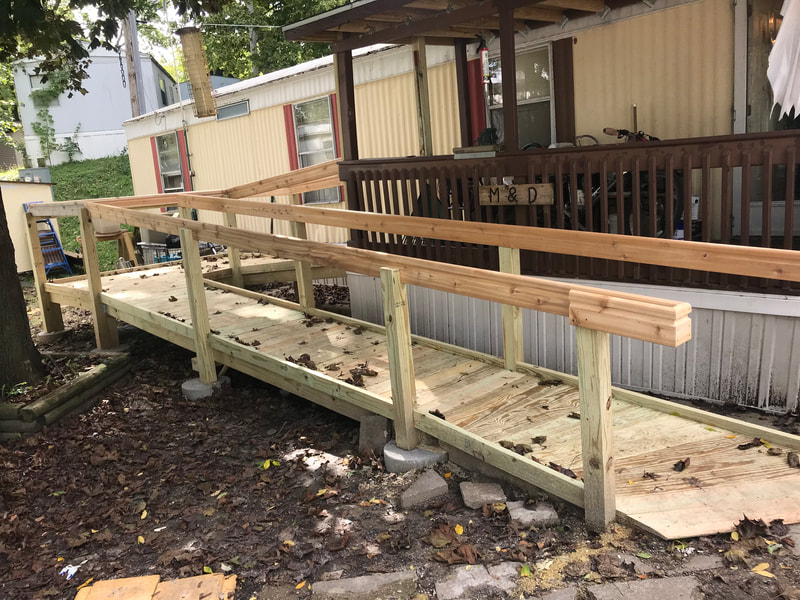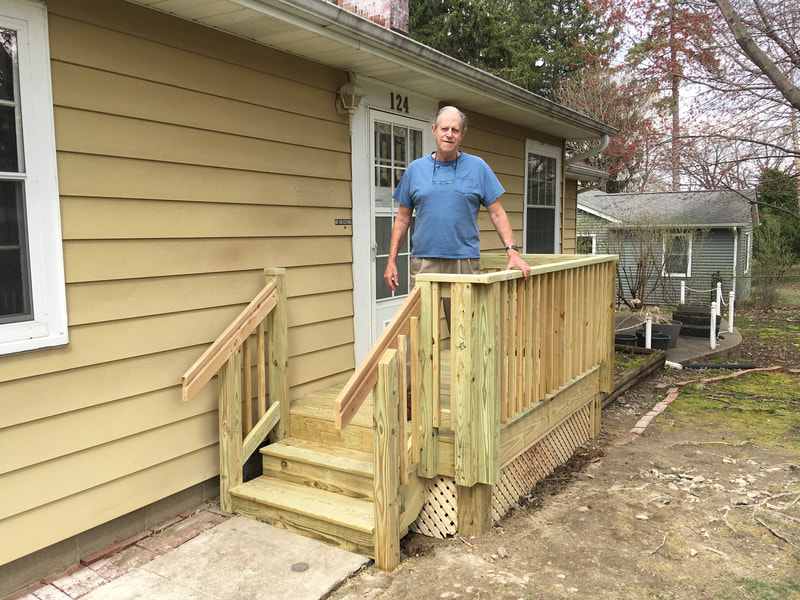|
Last month we celebrated the two-year anniversary of IVHFH’s Helping Hands repair program by getting our hands dirty with demolition on our next aging in place project. While cruising along Highway 218 from Washington to Iowa City with a truck weighed down by debris and a cast iron tub, I reflected on a few things I have learned during the last 24 months. So, here it is, a not-so-comprehensive list of things that I’ve learned by working in Helping Hands:
1. Helping Hands brings people together. This is not a new idea -in fact it is clearly stated in our Mission Statement- but bringing people together to create housing solutions is the foundation for our success. The current project best exemplifies this sentiment. Occupational therapists from the Washington County Health Clinic volunteered their time to develop the scope of work. Members of the Board of Directors, specifically Lindsay Glynn and Mackenzie Wise, volunteered their time to review the needs of the homeowner and offer advice on how to best meet those needs (along with a million other things to support Helping Hands). Sub-contractors completed installation of the new no-step shower, grab bars, new toilet and the stair lift. Our construction staff completed the demolition of the bathroom, installation of railings, installation of new flooring and finish work around the shower. And office staff helped to develop relationships with donors and financial supporters, so that we could keep the project affordable for the homeowner. Behind each of the people that spent time on the project are dozens of other supporters who donated money, volunteered time, and advocated for our mission. All of these efforts culminated in us ripping up a bathroom, hauling away the wreckage, and then rebuilding to make a home safe and accessible. 2. Safe and accessible homes improve quality of life. For example, a few weeks ago we received an application from a woman who has trouble navigating three steps outside her home. She leaves her house very infrequently, which has a detrimental impact on her mental and emotional health. She was very candid in saying she often feels trapped in her house. We are set to construct a ramp for her later this year and the mere discussion of the project brings a smile to her face. She knows that an accessible home will make it easier to go grocery shopping, visit her family, and get to the movies. This aggregation of lumber, screws, nails and brackets won’t just make the stairs manageable, it will return her independence. 3. Need for critical repairs and aging in place modifications is significant. And although these projects are more economical than enduring unsafe housing or prematurely moving into assisted living, financial hardship prevents too many people in our community from getting their shelter needs met. In the last two years, Helping Hands has helped meet this need by completing projects including ramp construction, roof repair, and modest bathroom remodels for more than 40 households! You can help! There are many ways to support Helping Hands. Contact Scott at [email protected] or 319-337-8949 for more information. -Article written by Scott Hawes, IVHFH Helping Hands Manager Comments are closed.
|
|
|
Our Mission: Seeking to put God’s love into action, Habitat for Humanity brings people together to build homes, communities and hope.
Our Vision: A world where everyone has a decent place to live. Our Values: - Demonstrate the love of Jesus Christ. - Focus on shelter. - Advocate for affordable housing. - Promote dignity and hope. - Support sustainable and transformative development. |
We welcome all who believe that everyone needs a decent, affordable place to live. Habitat for Humanity International and its affiliated organizations do not proselytize.
Habitat will not offer assistance on the expressed or implied condition that people must either adhere to or convert to a particular faith, or listen and respond to messaging designed to induce conversion to a particular faith. |















